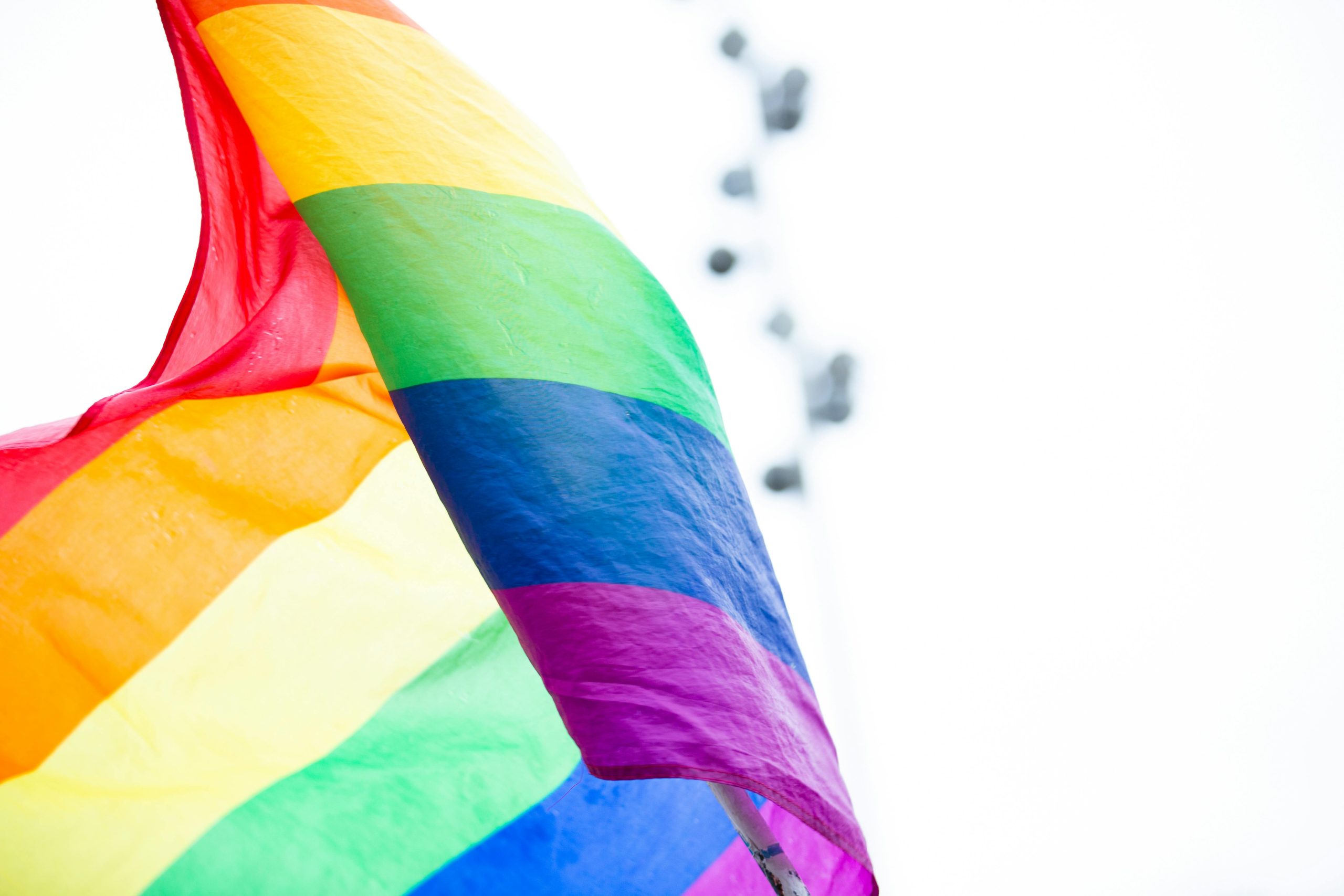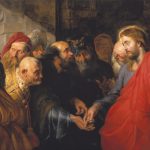By Deacon Pedro Guevara-Mann
I’ve struggled with this for several years now.
I’ve been told that the rainbow flag is a symbol of pride of identity for those in the LGBTQ2S+ community. It is also a sign of hope for social change. I’ve also been told that the rainbow flag is a symbol of love. It is a symbol of trust and community. When flown outside a school, it means that gay and trans students are recognized; that they are seen. A building that flies a rainbow flag is a safe space, a place that is inclusive and accepts diversity. When they see these symbols, students feel that they are not alone; that they are accepted.
On the other hand, not flying a rainbow flag means that a certain student population is not represented; that they are ignored. I am told that for a student who identifies as LGBTQ2S+, not seeing a rainbow flag or Pride-related symbols, means that their sexual orientation or gender identity is not supported and therefore, that they do not feel safe.
If we look at it narrowly, the rainbow flag is a symbol of lesbian, gay, bisexual, transgender, queer and two-spirited pride and their social movements. The flag was created in 1978 and is also known as the gay pride flag or simply the “Pride Flag.” Originally it had eight stripes, but today it is composed of the six colours of the rainbow, each colour representing the diversity of the LGBTQ community. Because the groups represented have become more and more diverse, in 2018 another flag was created called the Progress Pride Flag. It is based on the 1978 original, but with five new colours: black and brown, to represent people of colour, and pink, light blue and white to represent transgender people, gender non-binary people and those across the gender spectrum. There are also other flags representing members of the community who identify as bisexual, lesbian, pansexual, intersex, gender-neutral, trans or transitioning, nonbinary, genderfluid, agender and genderqueer. You may have seen these flags, particularly the Progress Pride Flag, flying outside schools and certain buildings this year. All these flags are symbols of pride for the groups they represent, but they are also symbols of social movements as each of these groups struggle and seek to strengthen the LGBTQ2S+ human rights movement and advocate for inclusion and equality.
I remember when the rainbow flag was a clear sign that those in the gay and lesbian community were accepted and that their rights as human beings with equal dignity were recognized. As a Catholic, it was not hard to accept the original meaning of the symbol. In the words of Pope Francis, “In the Church there is room for everyone” (Welcome Ceremony, World Youth Day 2023). And as Catholics, we should be the first to champion (and yes, be proud) that we are all children of God, no matter who we are, what we have done, or what our sexual attractions are. We are all beloved children of God. Catholics should be the first to treat everyone, especially those who have been historically marginalized, with respect, compassion, and sensitivity, and to make sure that they are and feel safe and welcome.
Yet, in the last couple of years, as the Pride Movement has grown, I don’t think we are exactly sure what, specifically, the rainbow flag stands for anymore. Is it a symbol for inclusivity? Is it a sign that all are welcome? Is it a symbol to identify a safe space for a certain group? Or is it a call for social change, change in attitudes and teachings? Is it a sign that everything is welcome? Many of my friends even feel that the flag has become a way for people to show how virtuous and “woke” they are.
Particularly, what does it mean when it flies outside a Catholic school? Some Catholic schools and school boards have opted not to fly the rainbow flag and have given different reasons for doing so: Because only government or national flags are flown or because flying one flag and not others shows preference for one group. The most common reason given is that the rainbow flag goes against the teachings of Jesus, the Bible and the Catholic Church.
If the Bible is about love, and Jesus welcomed all and the Catholic Church teaches inclusion, then what exactly does the latter reason refer to? I wish these school boards were more specific with their reasons.
I think I can help because this is where I begin to put words to what I have been struggling with: The reason why some people object to the flying of the rainbow flag is because we no longer know what it means and we are not sure we can support or agree with everything it could mean.
Does it mean something more than simply everyone is welcome and included? Will Catholics think that the Church accepts or celebrates every idea, teaching or ideology that the flag represents? Will it result in people thinking that the teachings of the Church on same-sex behaviour or homosexual acts have changed? Does it mean that the school or school board doesn’t accept the traditional definition of marriage? As the movement continues to call for more social change, such as recognizing and accepting gender fluidity, that one’s gender is not connected to one’s biological sex, or alternate forms of sexuality, such as polygamy or polyamorous relationships, doesn’t it become more and more difficult to accept flying the flag over Catholic schools?
As a parent, if I saw a rainbow flag outside my children’s school, I would be concerned about what my kids are being taught besides inclusivity and acceptance of diversity, in particular about human personhood and sexuality.
Do you see why I’ve struggled with this? I struggled with the fact that the rainbow flag now stands for a range of diverse and potentially conflicting perspectives, some that Catholics can and probably should affirm, and some we absolutely can’t.
When a Catholic educational institution displays a symbol that means different things to different people, it has the potential to send confusing and possibly conflicting messages to students, parents, teachers, staff and neighbours about what exactly the Catholic Church teaches. I find that problematic. It poses questions worth engaging, but the display is problematic nonetheless.
And so, I don’t struggle with this anymore. I am very clear as to why I cannot fly a rainbow flag, nor do I think that any Catholic institutions, especially ones dedicated to teaching the Catholic faith, should fly one either. This doesn’t mean that I am homophobic or hateful, and it doesn’t make me an “extremist.” It also doesn’t mean that schools that don’t fly a rainbow flag are not safe. I can call for inclusion, respect, safety and acceptance without having to fly a flag that may be communicating something I cannot support.
I truly believe that our Catholic schools in Canada are places where everyone is treated with dignity and respect, as a son or daughter of God. They are places where everyone is welcome. Why do they need a symbol that is not a Catholic symbol to show it?
Pope Francis is also famously quoted as having said, “Who am I to judge?” The pope was responding to a specific question about the so-called “gay lobby” at the Vatican while speaking with journalists on the flight back to Rome from World Youth Day in Rio de Janeiro on July 29, 2013. He said:
If someone is gay and is searching for the Lord and has good will, then who am I to judge him? The Catechism of the Catholic Church explains this in a beautiful way, saying … “No one should marginalize these people for this, they must be integrated into society.” The problem is not, having this (homosexual) tendency, no, we must be brothers and sisters to one another, and there is this one and there is that one. The problem is in making a lobby of this tendency: a lobby of misers, a lobby of politicians, a lobby of masons, so many lobbies. For me, this is the greater problem.
Let us zoom in: “If someone is gay and is searching for the Lord…who am I to judge him?”
I truly think that Catholic schools strive to help students search for the Lord. Ultimately, it is Christ who has saved the world. It is Christ who we need. It is in Christ that we know we are all loved, and it is Christ in whom, ultimately, our dignity lies. Now that is worth struggling with.
May all teachers at Catholic institutions continue to make sure that each student knows that they are deeply loved, more than they can ever imagine.
We don’t need a flag to show it.
Deacon Pedro Guevara-Mann, based in Toronto, is a producer at Salt+Light Media.





I don’t know why you have struggled with this issue, Pedro.
The ‘I don’t feel safe.u less the rainbow flag is flying” is an appeal to sympathy, emotion and to make people feel guilty for a crime they did not commit, and to pressure institutions to fly the flag.
With wisdom and discernment and the courage to stand for Christian values you would not have to struggle with what is obvious.
And that “Who I am to judge” comment?
That has led us into murky waters.
When we equate the call to righteousness with judging people, we are being coerced into silence about the call to bring the goodness to the poor.
Nowadays, the response to the call to repentance is *Don’t judge me!”
Catholics need to reclaim the rainbow! In Genesis, it never belonged to an interest group declaring their sexual preference.